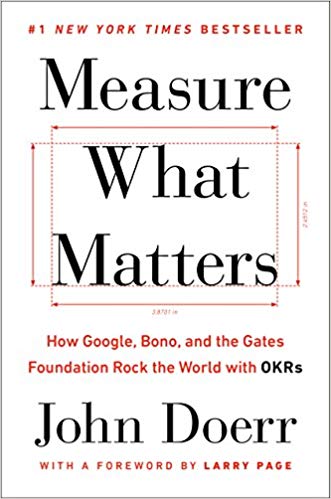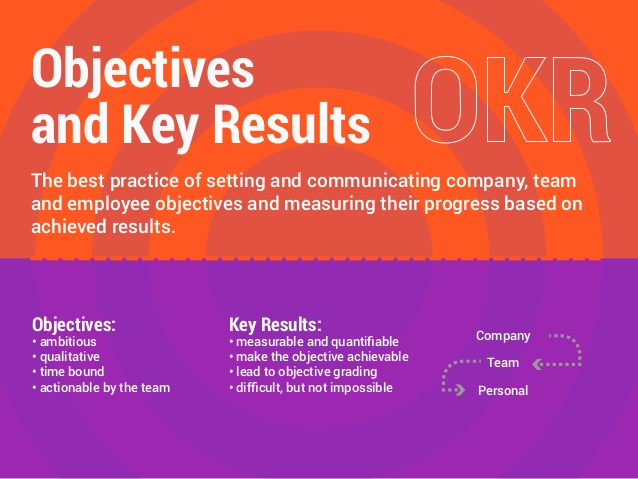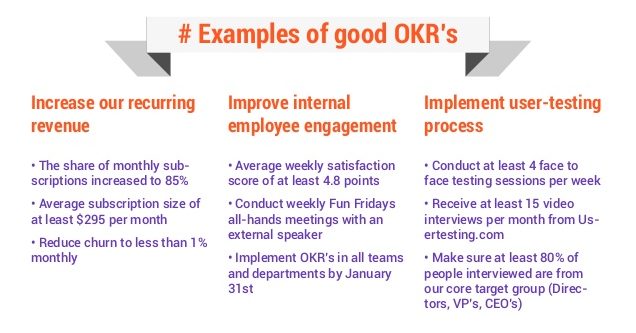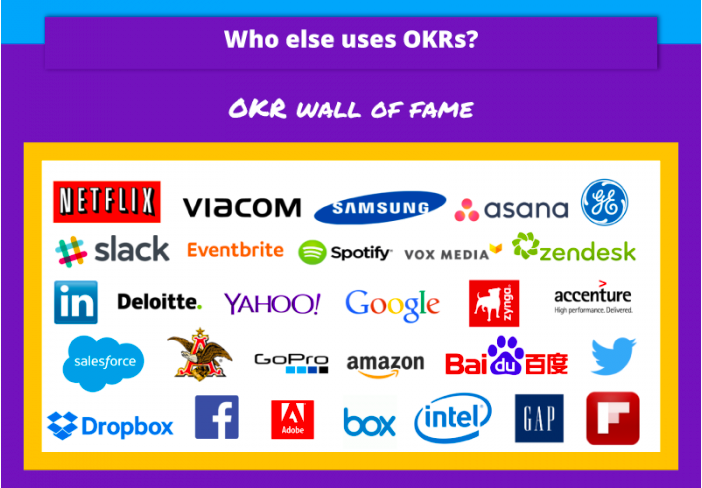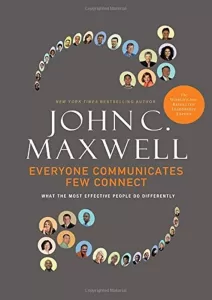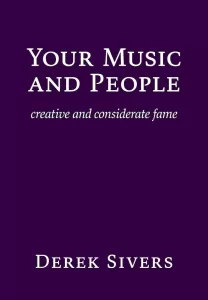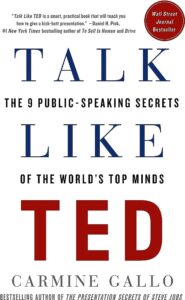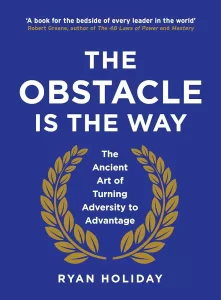Book Review: “Measure What Matters”
Book: Measure What Matters by John Doerr
Reviewer: Bobby Powers
My Thoughts: 9 of 10
Packed with insights from Google and Intel, Measure What Matters offers an insider's view into how the most successful companies set goals. Legendary venture capitalist John Doerr spent the early part of his career as an engineer at Intel, where he learned a goal-setting system that changed his career: OKRs (Objectives and Key Results).
OKRs are the brainchild of Andy Grove, who became Intel's CEO and is often regarded as one of the top business leaders of all time. Doerr brought OKRs to Google, where he was an early investor. Google co-founder Larry Page credits OKRs as one of the core strategies that propelled Google to success. Doerr's book is an excellent manual for how to conduct better strategic planning and goal-setting.
Selected Quotes and Ideas from the Book
OKRs Defined
- OKRs (Objectives and Key Results) are “a management methodology that helps to ensure that the company focuses efforts on the same important issues throughout the organization.”
- OBJECTIVES = WHAT is to be achieved. “By definition, objectives are significant, concrete, action oriented, and (ideally) inspirational. When properly designed and deployed, they’re a vaccine against fuzzy thinking--and fuzzy execution.”
- KEY RESULTS = Benchmark and monitor HOW to achieve the objective. “Effective KRs are specific and time-bound, aggressive yet realistic. Most of all, they are measurable and verifiable. (As prize pupil Marissa Mayer would say, ‘It’s not a key result unless it has a number.’) You either meet a key result’s requirements or you don’t; there is no gray area, no room for doubt.”
- “OKRs surface your primary goals. They channel efforts and coordination. They link diverse operations, lending purpose and unity to the entire organization.”
- “Objectives and key results are the yin and yang of goal setting--principle and practice, vision and execution. Objectives are the stuff of inspiration and far horizons. Key results are more earth-bound and metric-driven...In other words: Key results are the levers you pull, the marks you hit to achieve the goal."
Goal-Setting
- “Like any management system, OKRs may be executed well or badly...But make no mistake. For anyone striving for high performance in the workplace, goals are very necessary things.”
- “Among experiments in the field, 90 percent confirm that productivity is enhanced by well-defined, challenging goals.”
- “A two-year Deloitte study found that no single factor has more impact (upon employee engagement) than ‘clearly defined goals that are written down and shared freely...Goals create alignment, clarity, and job satisfaction.’”
- “Stressing output is the key to increasing productivity, while looking to increase activity can result in just the opposite.” -Peter Drucker
How to Set OKRs
- “A few extremely well-chosen objectives impart a clear message about what we say ‘yes’ to and what we say ‘no’ to.” -Andy Grove
- “A limit of three to five OKRs per cycle leads companies, teams, and individuals to choose what matters most. In general, each objective should be tied to five or fewer key results.”
- “To promote engagement, teams and individuals should be encouraged to create roughly half of their own OKRs, in consultation with managers. When all goals are set top-down, motivation is corroded.”
- “The OKR system, Grove wrote, ‘is meant to pace a person--to put a stopwatch in his own hand so he can gauge his own performance. It is not a legal document upon which to base a performance review.’ To encourage risk taking and prevent sandbagging, OKRs and bonuses are best kept separate.”
- OKR example: “We will achieve a certain OBJECTIVE as measured by the following KEY RESULTS...”
OKR Superpower #1: Focus and Commit to Priorities
- “The one thing an [OKR] system should provide par excellence is focus. This can only happen if we keep the number of objectives small...Each time you make a commitment, you forfeit your chance to commit to something else...We must realize--and act on the realization--that if we try to focus on everything, we focus on nothing.” -Andy Grove
- Winning organizations need to "put more wood behind fewer arrows." -Larry Page
- “To work out implementation kinks and strengthen leaders’ commitment, phase in your rollout of OKRs with upper management first. Allow the process to gain momentum before enlisting individual contributors to join in.”
- “The more ambitious the OKR, the greater the risk of overlooking a vital criterion. To safeguard quality while pushing for quantitative deliverables, one solution is to pair key results--to measure ‘both effect and counter-effect,’ as Grove wrote in High Output Management.”
- Effect: Client Support Reps should address 30 calls per day (measures quantitative deliverable)
- Counter-Effect: Client Support Net Promoter Score (NPS) above 50 (measures quality)
OKR Superpower #2: Align and Connect for Teamwork
- “Studies suggest that only 7 percent of employees ‘fully understand their company’s business strategies and what’s expected of them in order to help achieve the common goals.’”
- “In the workplace, we’re naturally curious about what our leaders are doing and how our work weaves into theirs. OKRs are the vehicle of choice for vertical alignment.”
- “In an OKR system, the most junior staff can look at everyone’s goals, on up to the CEO. Critiques and corrections are out in public view...Meritocracy flourishes in sunlight.”
OKR Superpower #3: Track for Accountability
- “One underrated virtue of OKRs is that they can be tracked—and then revised or adapted as circumstances dictate. Unlike traditional, frozen, ‘set them and forget them’ business goals, OKRs are living, breathing organisms.”
- “For an OKR system to function effectively, the team deploying it—whether a group of top executives or an entire organization—must adopt it universally. No exceptions, no opt-outs.”
- “Without frequent status updates, goals slide into irrelevance; the gap between plan and reality widens by the day.”
- Effective OKR management systems make everyone’s goals more visible, drive engagement, promote internal networking, and save time, money, and frustration.
- “If the ladder is not leaning against the right wall, every step we take just gets us to the wrong place faster.” -Stephen Covey
- “What’s neat about OKRs is that they formalize reflection. At least once each quarter, they make contributors step back into a quiet place and consider how their decisions align with the company. People start thinking in the macro.” -Alex Garden
OKR Superpower #4: Stretch for Amazing
- “At the beginning of each cycle, distinguish between goals that must be attained 100 percent (committed OKRs) and those that are stretching for a Big Hairy Audacious Goal (a BHAG, or aspirational OKR).”
- “A BHAG is a huge and daunting goal—like a big mountain to climb. It is clear, compelling, and people ‘get it’ right away. A BHAG serves as a unifying focal point of effort, galvanizing people and creating team spirit as people strive toward a finish line. Like the 1960s NASA moon mission, a BHAG captures the imagination and grabs people in the gut.” -Jim Collins, Good to Great
- Larry Page wanted his people at Google to have “a healthy disregard for the impossible.”
- “Google is propelled by our moonshot culture. The very ambitious is very hard to do...But when you set a measurable objective for the year and chunk the problem, quarter by quarter, moonshots become doable. that’s one of the great benefits of OKRs. They give us clear, quantitative targets on the road to those qualitative leaps.” -Sundar Pichai
- “Aspirational OKRs very often start from the current state and effectively ask, ‘What could we do if we had extra staff and we got a bit lucky?’ An alternative and better approach is to start with, ‘What could my [or my customers’] world look like in several years if we were freed from most constraints?’ By definition, you’re not going to know how to achieve this state when the OKR is first formulated—that is why it is an aspirational OKR.”
- “Stretch goals were beautifully defined by the leader of the Google X team that developed Project Loon and self-driving cars. Says Astro Teller: ‘If you want your car to get fifty miles per gallon, fine. You can retool your car a little bit. But if I tell you it has to run on a gallon of gas for five hundred miles, you have to start over.’”
- “To get leaps in productivity or innovation, follow Google’s ‘Gospel of 10x’ and replace incremental OKRs with exponential ones. That’s how industries get disrupted and categories reinvented.
Think you’d like this book?
Other books you may enjoy:
- High Output Management by Andy Grove
- Work Rules! by Laszlo Bock
Other notable books by the author:
- (None)
Want to become a stronger leader?
Sign up to get my exclusive
10-page guide for leaders and learners.
